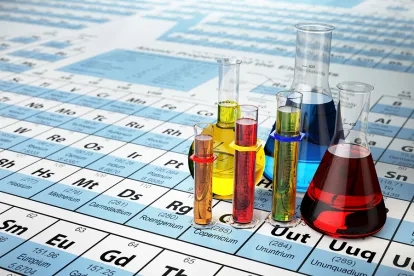The US Supreme Court issued a decision in Helsinn Healthcare S.A. v Teva Pharmaceuticals, USA, Inc., holding that the on-sale bar of AIA 35 USC §102(a)(1) applies to confidential sales where specific details are not made public.
In Depth
On January 22, 2019, the US Supreme Court issued its decision in Helsinn Healthcare S.A. v Teva Pharmaceuticals, USA, Inc., finding that the post-AIA “on sale” bar provision operates the same as it did pre-AIA, namely the sale or details of the sale do not need to be publicly available in order to create a bar to patentability. The addition of the catchall phrase “or otherwise available to the public” that was added to AIA 35 USC §102 is not enough to conclude that Congress intended to alter the meaning of “on sale.”
Case Background
Helsinn developed Aloxi, a drug that treats chemotherapy-induced vomiting and nausea and that contains the active ingredient palonosetron. Helsinn entered into a licensing and a supply and purchase agreement with MGI Pharma to distribute, promote, market, and sell 0.25mg and 0.75mg doses of palonosetron in the United States. The purchase agreement included a confidentiality clause with regards to any proprietary information that may be revealed. The dosage formulations in the agreement were not released to the public, although there was a joint press release about the agreement in general, and the Form 8-K filing at the US Securities and Exchange Commission was accompanied by redacted copies of the agreements. In January 2003, almost 2 years after entering into the agreement with MGI Pharma, Helsinn filed a provisional patent application for 0.25 mg and 0.75 mg treatment doses of palonosetron. This provisional application ultimately led to four issued patents, the most recent being the ’219 patent. The ’219 patent, which is at issue in the case, was filed post-AIA in May 2013 and claimed a 0.25 mg dose of palonosetron in a 5 mL solution.
The litigation started after Teva sought approval from the US Food and Drug Administration (FDA) in 2011 to market a generic 0.25 mg palonosetron product. Helsinn then sued Teva for patent infringement of issued patents, including the ’219 patent. In response, Teva argued that the ’219 patent was invalid due to the on-sale bar of 35 USC § 102(a)(1).
The district court held in favor of Helsinn, finding that the sale to MGI Pharma did not create an on-sale bar under 35 USC 102(a)(1) because there was no public disclosure of the details of the agreement, such as the fact that it involved the 0.25mg dose. The Federal Circuit reversed the district court, holding that the fact that the sale itself was publicly disclosed was sufficient to meet the on-sale bar. (IP Update, Vol. __, No. __). Helsinn appealed to the Supreme Court.
Petition for Certiorari and Opinion
The question addressed by the Supreme Court was whether, under the AIA, an inventor’s sale of an invention to a third party who is obligated to keep the invention confidential qualifies as prior art for purposes of determining the patentability of the invention. In a unanimous decision authored by Justice Clarence Thomas, the Supreme Court concluded that such a sale qualifies as prior art.
The pre-AIA version of USC §102(b) stated “A person shall be entitled to a patent unless . . . (b) the invention was patented or described in a printed publication in this or a foreign country or in public use or on sale in this country, more than one year prior to the date of the application for patent in the United States.” After the AIA, 35 USC §102(a)(1) states that, “A person shall be entitled to a patent unless . . . the claimed invention was patented, described in a printed publication, or in public use, on sale, or otherwise available to the public before the effective filing date of the claimed invention.”
The Supreme Court noted that its decisions prior to the AIA suggested that a sale or offer for sale did not need to be available to the public. The Court also noted that the Federal Circuit had also issued pre-AIA decisions finding that “secret sales” can still trigger the on-sale bar. However, Helsinn argued that these prior decisions were inapplicable to the AIA version of 102(a)(1) because the addition of the language “or otherwise available to the public” limits the “on sale” bar to those sales that make an invention available to the public. The Court disagreed. It found that the term “on sale” was used in the pre-AIA, as well as AIA, statute, and when Congress adopts similar language, it “must be considered to have adopted also the construction given by this Court to such language.” Therefore, the Court decided that the additional language in the AIA version of 102(a)(1) did not alter the meaning of the on-sale bar and confidential sales are thus a bar to patentability.
Practice Note
Companies should be careful not to enter licensing, royalty or supply and purchase agreements prior to filing of any patent applications.



 />i
/>i
